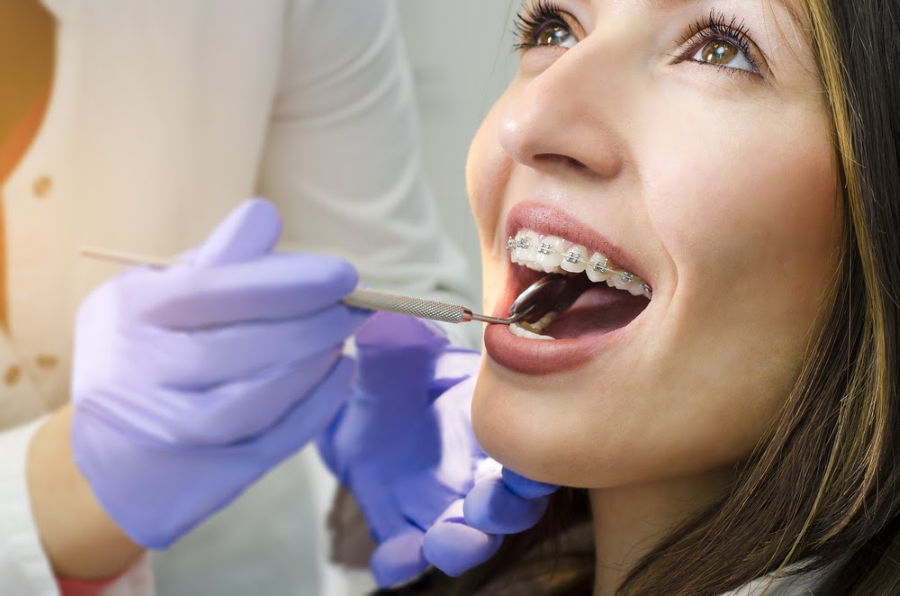All Star Family Orthodontics Fundamentals Explained
All Star Family Orthodontics Fundamentals Explained
Blog Article
The Facts About All Star Family Orthodontics Revealed
Table of ContentsHow All Star Family Orthodontics can Save You Time, Stress, and Money.The 30-Second Trick For All Star Family OrthodonticsAll Star Family Orthodontics Fundamentals ExplainedThe Greatest Guide To All Star Family OrthodonticsSome Of All Star Family Orthodontics

In addition, we use adjustable treatment schedules, flexible repayment choices and an enjoyable, delightful experience.
An orthodontist is a dental expert educated to detect, prevent, and treat teeth and jaw abnormalities - https://moz.com/community/q/user/allstarfamilyort. They correct existing problems and are educated to identify issues that may establish in the future. Orthodontists deal with people of any ages, from children to grownups. Individuals frequently connect an ideal smile with healthiness.
Malocclusion, or misaligned teeth, can bring about dental problems, including dental caries, gum tissue illness, and hard or unpleasant chewing. Not every person is birthed with straight teeth. If you have a negative bite or huge rooms in between your teeth, you might wish to seek advice from a dentist specializing in orthodontic treatment.
The 8-Minute Rule for All Star Family Orthodontics
(Image Credit Scores: DigitalVision/Getty Images) Orthodontists utilize taken care of and detachable oral gadgets, like dental braces, retainers, and bands, to alter the position of teeth in your mouth. Orthodontic therapy is for oral problems, including: Uneven teethBite problems, like an overbite or an underbiteCrowded teeth or teeth that are also much apartJaw misalignmentThe goal of orthodontic therapy is to improve your bite.
A healthy and balanced bite guarantees you can consume, eat, and speak correctly. While you could consider orthodontists as mainly for children or teens that require braces, they can deal with oral troubles at any age. Orthodontists attend college, dental school, and orthodontic college. After college graduation, they invest 2 or 3 years in an orthodontic residency program.
, but not all dental experts are orthodontists. They concentrate on two areas: Exactly how to correctly and securely move teeth How to appropriately assist growth in the teeth, jaw, and faceOnce an orthodontist has actually finished training, they have the option to end up being board licensed.
Excitement About All Star Family Orthodontics
Imbalance, or malocclusion, is the most typical factor people see an orthodontist. Malocclusion is usually treated with: Your orthodontist connects steel, ceramic, or plastic square bonds to your teeth.
If you have just small malocclusion, you might have the ability to make use of clear braces, called aligners, rather than standard braces. Some people require a headgear to help relocate teeth into line with stress from outside the mouth. After braces or aligners, you'll require to use a retainer. A retainer is a customized tool that keeps your teeth in place.

You may need to see an orthodontist if you have: Crowding or otherwise adequate space for all of your teethOverbite, when your upper teeth come your bottom teethUnderbite, when your bottom teeth are also far forwardSpacing or problems with gapsCrossbite, which is when your upper teeth fit behind your bottom teeth when your mouth is closedOpen bite or an upright gap between your front base and top teethMisplaced midline, when the center of your base and top teeth don't align Correcting an oral malocclusion can: Make attacking, chewing, and speaking easierImprove the balance of our face important source and your total appearanceEase pain from temporomandibular joint problemsDifferent your teeth and make them simpler to cleanse, helping protect against dental cavity or dental caries It's frequently a dental practitioner who initially notifications misaligned teeth during a routine examination.
All Star Family Orthodontics for Beginners
Throughout your initial orthodontic examination, you'll likely have: An oral examPhotos taken of your face and smileDental X-raysPanoramic (360 level) X-rays of your face and headImpressions to create molds of your teethThese tests will help your orthodontist know how to wage your treatment. An orthodontist is a dental professional that's had training to treat your teeth and jaw.
Orthodontists may carry out surgical procedure, exams,X-rays, - old bridge orthodonticsand even more to help you obtain a more comfortable, healthier smile. An orthodontist is concentrated on your bite, so something like a cracked tooth would be managed by a dental expert. Orthodontists are dental practitioners however not all dental experts are orthodontists. Orthodontists are focused on your bite, or the means your teeth fit with each other, and the straightness of your teeth.

This initial consultation includes a visual exam of your teeth and attack, X-rays, and possibly also 3D scans. By carefully reviewing these aspects, the orthodontist can determine any kind of misalignments, crowding, spacing concerns, or jaw inconsistencies. As soon as a clear photo is established, the orthodontist will certainly discuss individualized treatment alternatives. This conversation will certainly cover the type of dental braces or aligners recommended (typical steel braces, clear aligners like Invisalign, and so on), the estimated therapy period, and any potential challenges or adverse effects.
Unknown Facts About All Star Family Orthodontics
, orthodontists have a diverse toolkit at their disposal. These tried-and-true dental braces use a system of brackets adhered to the teeth and attached by cables.
Clear aligners, like Invisalign, are a preferred choice for individuals seeking a more very discreet treatment option. These removable trays are customized to progressively shift the teeth's setting. Headgear may be utilized in conjunction with dental braces or aligners to use extra targeted forces, specifically for dealing with jaw inconsistencies. In situations of narrow jaws, palatal expanders can be made use of to develop area for proper tooth placement.
Report this page